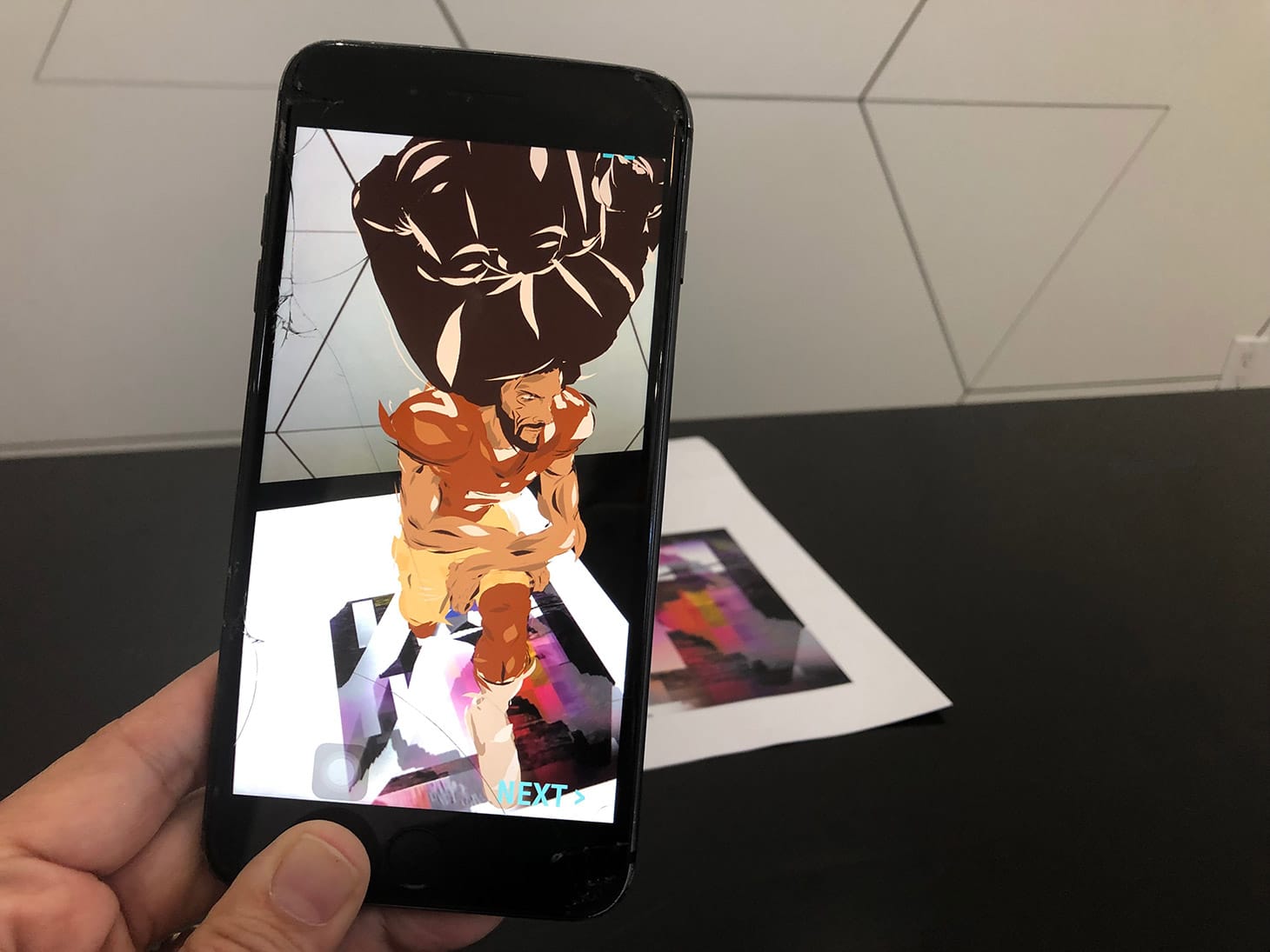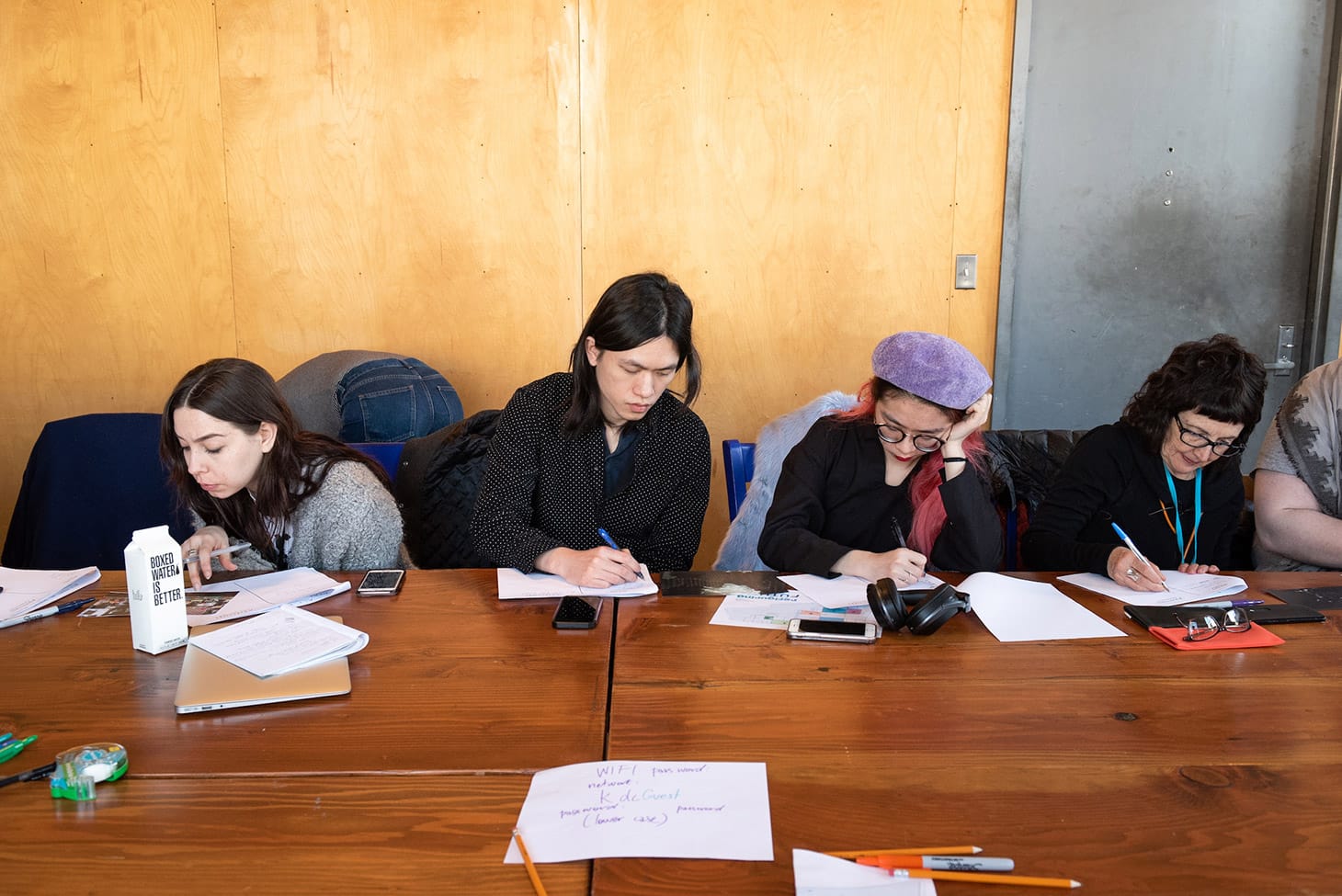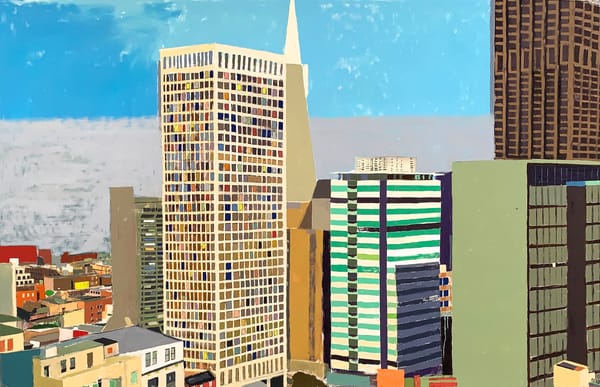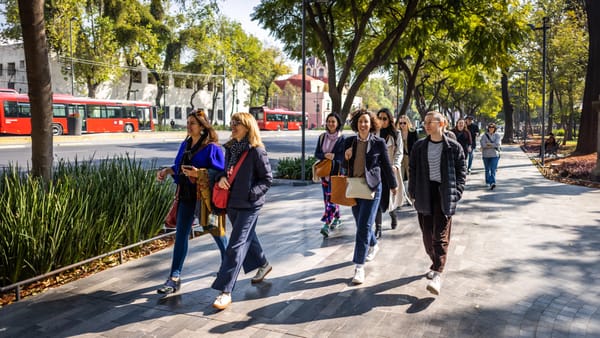Inside the Studios of Four Artists at the Eyebeam Residency Program
Here's what I learned from an intimate studio visit where these artists showed me their process, vision, and the goals fueling their work.

I do a lot of studio visits, otherwise known as meeting with artists to talk about their projects, usually where they are working, in a studio, a café, their homes, or residency spaces. The conversations are often meandering, bouncing between artworks and ideas, new work and past projects, but they all have one thing in common: a face-to-face conversation about the big themes and the intellectual and physical stumbling blocks of the creative process. These moments are intimate, and it is always a privilege to be invited into spaces of creation and vulnerability. These are times when I shelve everything else I’m thinking about and dive into the artists’ world. I thought it would be fun to share some of those experiences in a series of pieces to feature some of the work in progress by artists with whom I’ve been spending time.
First up are the four artists currently in Eyebeam’s residency program, which provides artists with a stipend and a shared workspace to develop work that relates technology and society through the creation of new work. The program has supported the work of over 500 artists over the last 20 years and this year’s cohort was selected around the theme of “Access.” In late-May, I had the pleasure of visiting with each of the four residents and what follows is a peek into their current projects.
Movers and Shakers

I met first with Glenn Cantave, one member of the collective Movers and Shakers, which comprises artists, activists, technologists, and educators. Cantave shared their recent work on addressing who controls the narratives of historical and contemporary events. Motivated by the ongoing debates surrounding who is represented in monuments in New York City and elsewhere, specifically the Christopher Columbus statue in Columbus Circle, they are developing an app that makes invisible biases clear in the typically unauthored ambience of monuments in public space. The app identifies your location and uses your phone’s camera (through a QR code or another signifier) to display an augmented reality animation over various views of the statue you’re looking at with additional or alternative content. For example, embattled NFL quarterback Colin Kaepernick might appear kneeling over the real-life statue in front of you. In addition to providing a new image for the monument, the animation will relay alternative tellings, facts, and figures about the history connected to it. This not only circumvents typical political processes and pressures to get alternative histories told but also puts collective historical context front and center.
Yoyo Lin

Yoyo Lin was up next, and the first thing she showed me was a notebook, a diary really, that maps her physical and emotional realities over time. She’s trying to work out a system to reclaim chronic health trauma through the creation of an archive of embodied truths around chronic illness and disability. She opened the book to a random page and laid out in front of me was a carefully color coded and shaded circle, divided into the days of the month, depicting how Lin felt, in every dimension, throughout the 30 day period. She used colored and graphite pencils, and the delicate shading reflects not only an acute color sense, but also changes in moods and levels of pain or well-being. This daily data tracking exercise is an attempt to reveal and re-value the experience of chronic illness. And she’s not only journaling her own shifts, but is also doing some exciting movement research where she is inventing a practice with others working with various chronic conditions or disabilities. In fact, Lin played a video for me of a performance which was accompanied by a soundtrack mixed from the actual sounds her body makes — the bones and ligaments stretching and in friction with one another. Her body makes this music and it moves like poetry, and through her experiments in tracking those sounds, and shifts and movements, she is working on turning the stigma of chronic illness upside down, where her body and others’ can be a place of being rather than a site of pain or trauma.
LaJunè McMillian

The Black Movement Project has been the focus of LaJunè McMillian’s work during her Eyebeam residency. This initiative is based profoundly in the racial bias embedded in nearly all digital tools, especially in character modeling used most widely in the creation of video games and avatars. LaJunè pulled up some standard character modeling software on the large screen on her desk, revealing a bevy of options based on anatomical figures, all of which have white skin and white features. In an attempt to create a new cadre of “base characters” that represent people of color, she has been conducting workshops that bring together POC to chart their bodies moving in space. To collect this information she uses motion capture technologies, sensors, and recording equipment. The data gathered is then used to create personalized 3-D characters that populate any animation that uses 3-D modeling. She aims to create an archive of self-representation in the digital sphere.
Shannon Finnegan

Shannon Finnegan started the Anti-Stairs Club Lounge in 2018 when she was a resident at the Wassaic Project and found that there was only one space accessible to residents who could not use stairs. While in this case she made a cool and cozy lounge that was accessible in physical space, the project has since expanded into galvanizing artists to get involved in protesting public spaces that are not accessible, like the now-notorious Vessel in Hudson Yards. For her residency at Eyebeam, one of her primary desires is transferring ideas of access to digital space, particularly around art and art institutions. She explained that every image on the web has an embedded description called alt text (or “alternative text”), which narrates the image so that software made for people with low or no vision can hear this description and “see” the internet. She also showed me the MCA Chicago’s alt text guidelines as they’re one of the few museums that has such protocols (they participated in creating the open-source Coyote software that can help organizations get this work done). Shannon has been holding workshops with Bojana Coklyat to get creative with these image descriptions, experimenting with alt text as a potential site for a poetry or literary narratives that might be more evocative than a straightforward physical description, or could be added as additional descriptors to give a fuller sense of the work. This fascinating campaign opens up so many possibilities for the multiple dimensions of describing artworks for all audiences through a lens of accessibility. It is easy to recognize the dimensionality curators, artists, poets, and musicians could contribute to how we all “see” images on the web.





